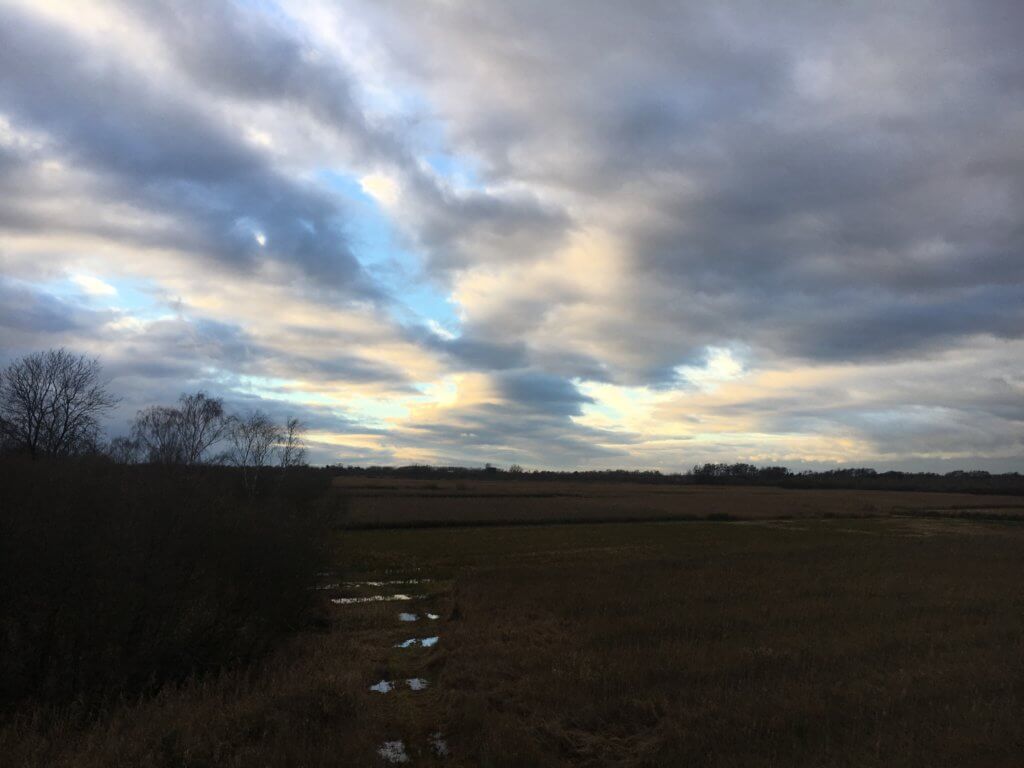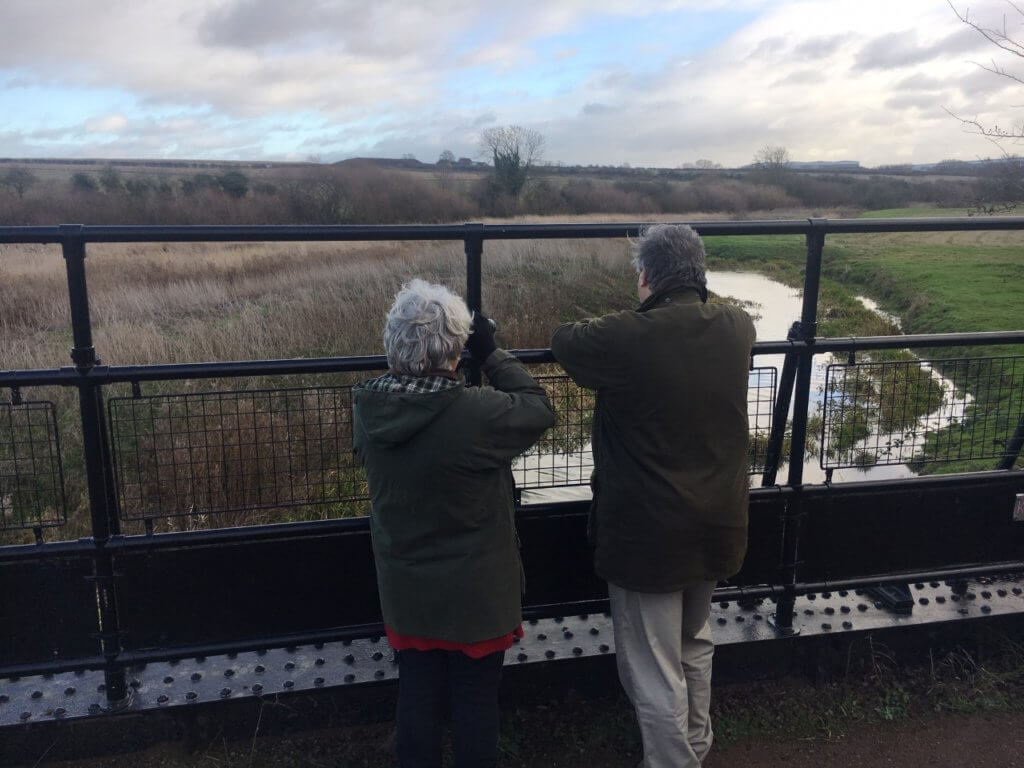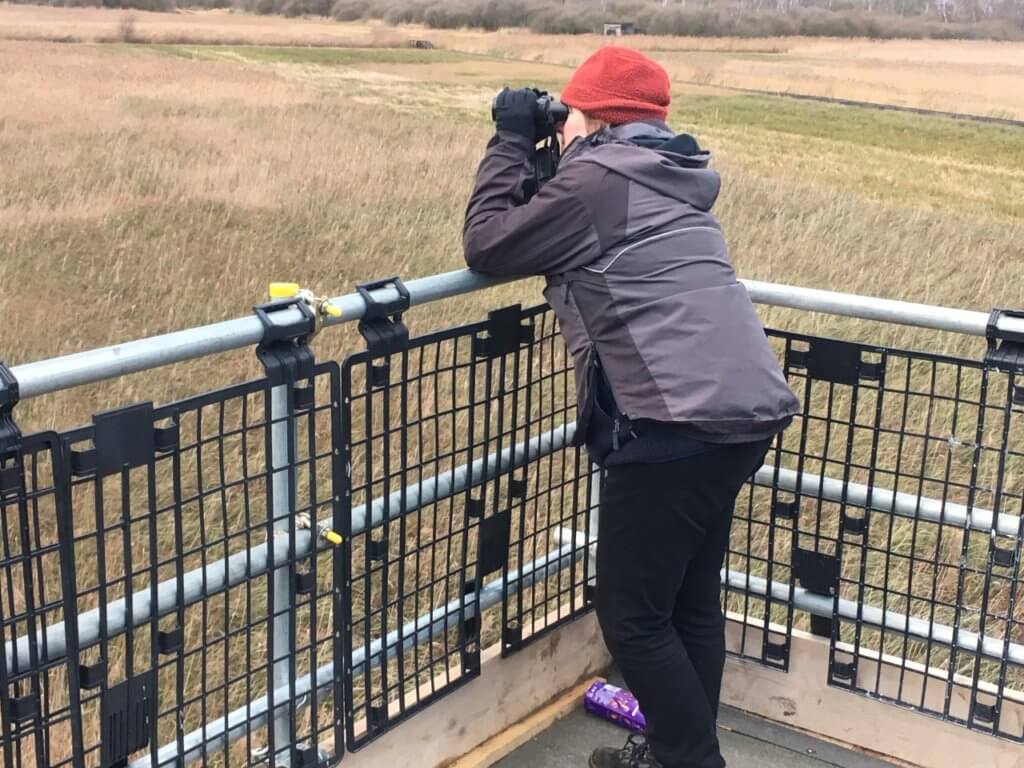
The shortest day of the year (more or less) – so what could be better than seeing lots of Hen Harriers? Well, ‘lots’ might be difficult, given where I live, but actually, at my local patch of Stanwick Lakes. There has been an adult (probably 2nd winter) male Hen Harrier seen off and on for about 10 days. On my visits to one end of my local patch (about 7 or 8 visits) I have failed to see this bird and it has been beginning to get under my skin slightly.

After a couple of hours this morning we left empty handed – again!
But we had a Plan B!
Plan B was to visit the National Trust site of Wicken Fen where the reedbed (see top image) is a regular roost site for both Marsh and Hen Harriers at this time of year. And both species are on the notice board too.

As soon as I had told the nice lady in the visitor centre that I didn’t want to be a NT member because of their stance on so-called trail hunting and their failure to stop driven grouse shooting on their land, we were looking at a very attractive cream-crowned, cream-shouldered Marsh Harrier.
Then a few moments later it was joined by a male Hen Harrier – smart bird!
We saw this male Hen Harrier quite well several times and for minutes at a time. What a bird! As a fellow birder (and famous scientist) whom we met a bit later said, the males seem almost to emit light, they are so striking.
We watched from the temporary viewing tower and the view was great. We were joined by a mother and her daughter and both were thrilled to see the Hen Harrier and both knew exactly what they were looking at and how wonderful it was. I’m sure the sighting made their day just as it made mine and the others in the group including, appropriately enough, Ruth Tingay.

It was a good solstice day for us. I hope it was for you too.
But I still want to see that Hen Harrier at Stanwick Lakes too!
Always niece to get passed the shortest day. Not much change in day light to start with but it slowly gets better and after abut mid Feb fairly rapidly improves due to the daylight length over the year being a mathmatical sine wave.
If anyone deserves to see a (male) hen harrier on the Solstice or indeed on any other day Mark it is you (and Ruth Tingay too)….merry solstice to both, indeed all!
A good omen of things to come ….
I agree with the point about males being striking and emitting light 😉
For somebody who could watch harriers from the house [even had a loo tick being mobed by Merlin and Short eared Owl!] numbers are down. The new way of watching harriers and owls over ‘cropping’ is great for the feeding birds but too many areas of cropping are for game birds and we know of at least one satellite tagged bird being shot over this food sauce. More reserves should grow cropping near hides so harriers can be watched in comfort for the birder and safer for the birds themselves like at Caeralverock where winter harriers are guaranteed.
Miles following on from your suggestion that more reserve should grow cropping near hides.
The other night while listening to the fuselage of shots over a nearby flight pond I wondered how many of the proudly stated totals of ducks recorded on the nearby RSPB Reserve were disappearing that night.
This led me to wonder why reserves don’t do diversionary feeding with their own flight ponds. There are 3 flight ponds within a mile of the reserve but with regular discouragement from shooters duck would soon learn to favour any safe feeding ponds established around the reserve.
The RSPB could also ask the members to chip in for that food you mentioned. The same reserve no doubt has a ‘bird feeding station’ for tits etc so why not for other species. Rat poison is used around these feeding stations costing even more and causing secondry poisoning to Barn owls etc so why not remove food for a period allowing the rats to move away as most reserves have habitat to feed the birds any way. My name is John by the way and my surname is Miles [not made up like some people on here!]
The only male harrier I have seen this year was at Frampton Marsh in January, always utterly magic to see. I assume that John means birds over game/bird feeding crop strips OK as long as it is not game crop strips where birds are unpopular with the country “sports” brigade there are odd Sat tagged birds that have disappeared in such places and another died of disease probably caught from RL Partridges at such places. Roosts can be good I used to go to the one a Blacktoft Sands but often it was Marsh Harriers with no HH or the HH came in very late when it was almost dark. Moorland roosts are very hit and miss now with the population so low but if you see them in such situations remember to put it on the harrier hot line.
Out at eight this morning to allow my partner to get off early to her daughters ( back Christmas morning) was worthwhile for birds watched our local female Goshawk flying from presumed roost off hunting. Sacrilege it may be but a good close view of a Goshawk in good light ( which this wasn’t) is almost as good as a grey male harrier, especially with alarming Ravens around as well. A happy Solstice to all.
Took the dogs for a walk ywsterday afternoon (22nd). Shortest day came and went. Obviously the plants are already responding. Catkins on the willows and alders well emerged. Spring is on its way!
You could have walked a little further to Burwell Fen, where a mere and wetland have been created recently by the NT from arable farmland, to see the regular short-eared owls. There was also a large flock of whooper swans there a few days ago, probably on their way to the Ouse Washes, plus water pipit. Its a great place.
Swarr – I heard there were some Shorties seen.